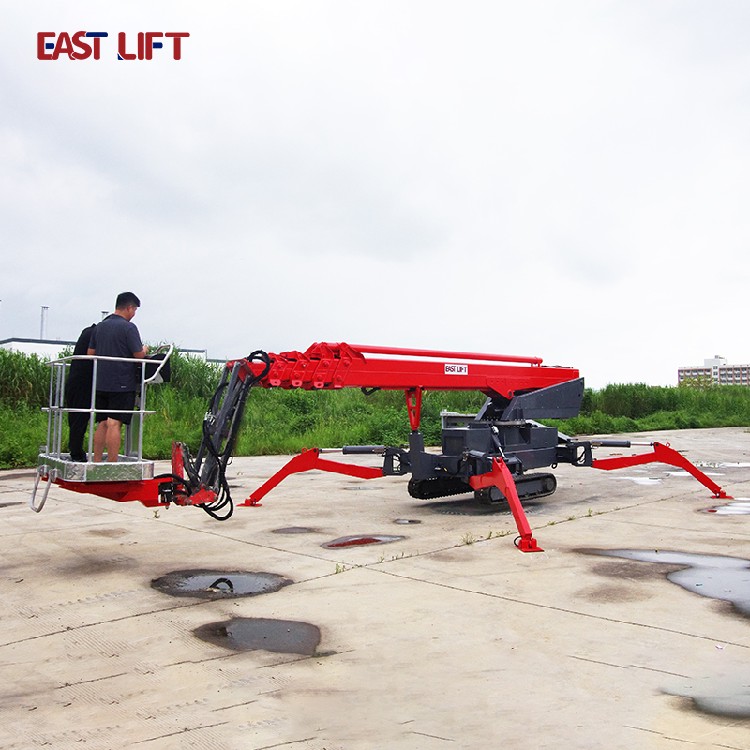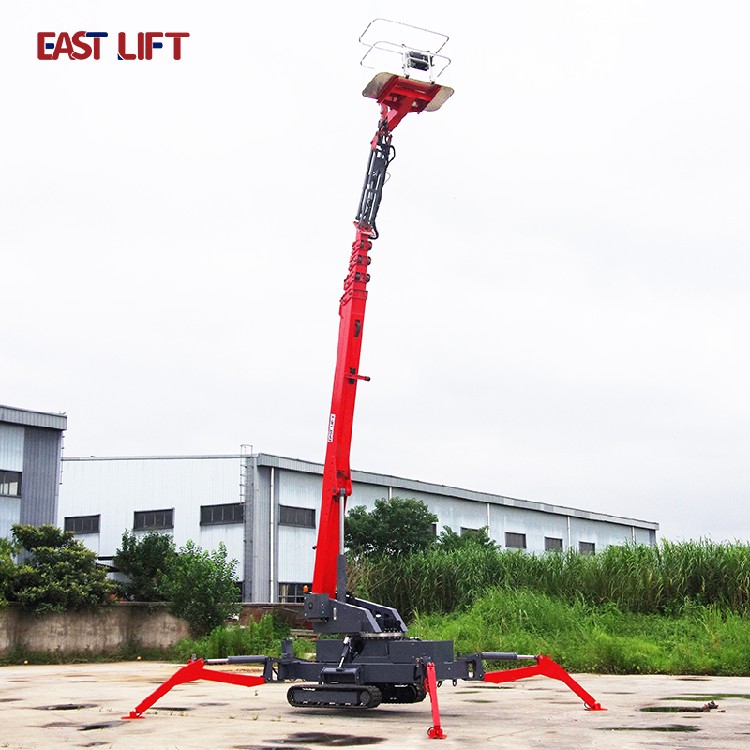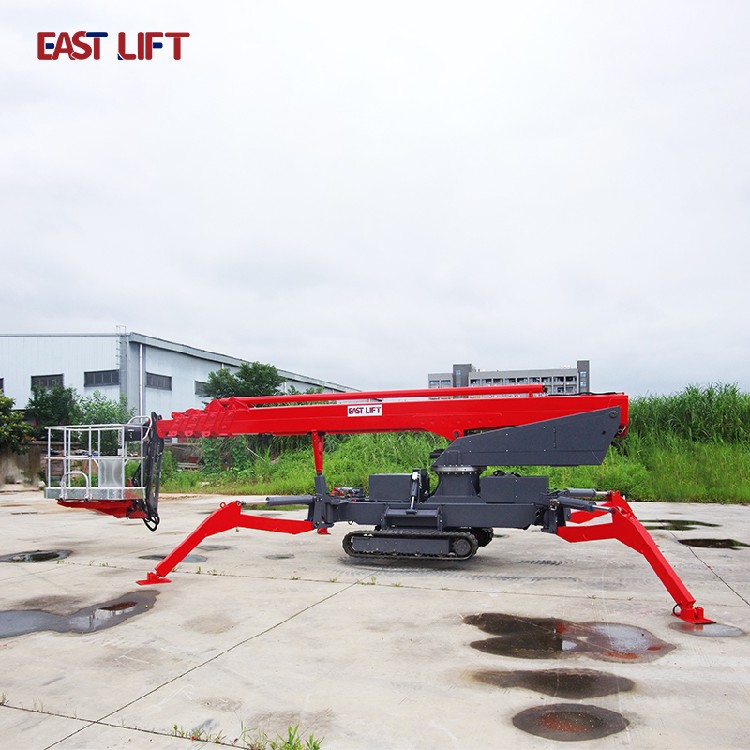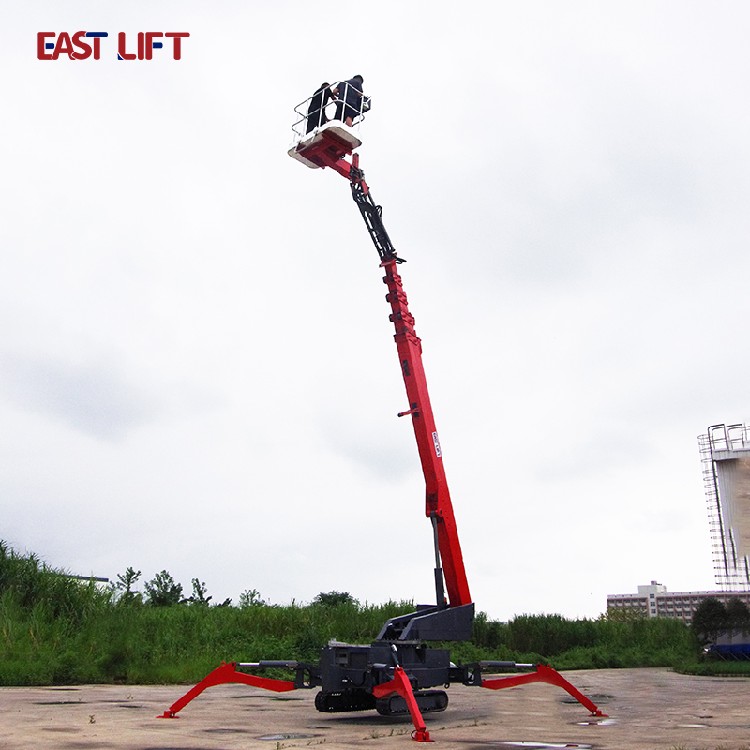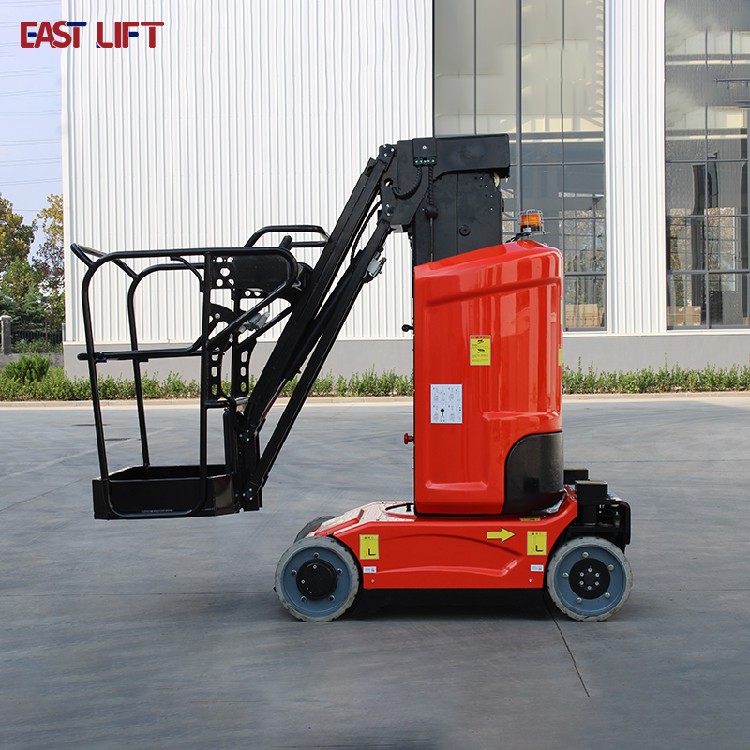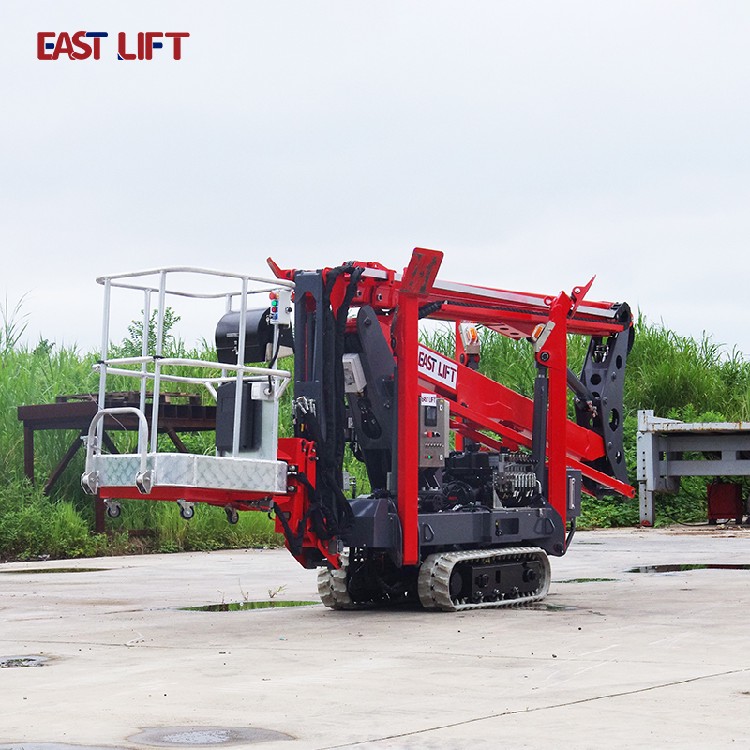Differences between straight-arm spider lifts and traditional equipment in the high-altitude work industry
Product description
In the modern high-altitude field, the selection of equipment plays a decisive role in the efficiency, safety and smooth progress of operations. The straight-arm spider lift and the traditional aerial work vehicle, as two common types of high-altitude operation equipment, have significant differences in many aspects, and each, with its own advantages, plays an important role in different operation scenarios.
I. The design of the vehicle body and its adaptability to the site.
Straight-arm spider lifts: The body is compact, small, flexible, safe and convenient. The outriggers can be extended and retracted, enabling easy movement in narrow spaces and complex terrains.
Traditional aerial work vehicles: Firstly, they are large in size and relatively heavy in weight. They have very high requirements for the space of the work site and the load-bearing capacity of the ground, and their adaptability to complex sites is rather poor.
II. It is the flexibility of operation.
Straight-arm spider lifts: The outriggers can flexibly adjust the height and angle separately, quickly adjust the balance of the vehicle body, and achieve precise positioning. They can send operators to the designated positions, thus improving work efficiency, and are suitable for tasks with high precision requirements. They are capable of continuously performing different types of high-altitude operations. Traditional aerial work vehicles: The adjustment methods of the outriggers are relatively simple. Their leveling ability in complex terrains is relatively weak, and the positioning accuracy is somewhat inferior. Their functions are rather single, and they may need to be used in conjunction with other equipment to complete tasks.
III. In terms of the power system.
Straight-arm spider lifts: Generally equipped with a dual-power system, they can be driven by electricity in some situations with high requirements, and can reduce exhaust emissions and noise pollution.
Traditional aerial work vehicles: Most of them are mainly powered by fuel, which will have a certain impact when working indoors.
IV. In terms of work efficiency.
Straight-arm spider lifts: After arriving at the work site, they can quickly start operating by deploying the outriggers and adjusting the working arm, with a short preparation time. When switching between different work points, the movement and adjustment of the arm are extremely flexible, allowing for rapid positioning, resulting in high overall work efficiency.
Traditional aerial work vehicles: Limited by site adaptability and mobility flexibility, they generally spend more time on preparations and moving to different locations.
V. In terms of price and cost.
Straight-arm spider lifts: Due to their unique design and high technological content, featuring fine retraction capabilities, a flexible outrigger system, etc., their prices are relatively high.
Traditional aerial work vehicle: Their design and manufacturing are relatively conventional, and their prices are more affordable.
With the increasing diversification of architectural styles, the growing refinement of urban space utilization, and the continuous improvement of high-altitude operation requirements in various industries, the application prospects of straight-arm spider lifts are becoming broader. They will not only continue to deepen their development in existing advantageous fields, enhancing work efficiency and quality, but also may expand into more emerging fields through technological innovation. However, this does not mean that traditional aerial work vehicles will be replaced. In scenarios such as large-scale infrastructure construction and large-scale industrial projects, traditional aerial work vehicles will still play a key role by virtue of their own advantages. In the future of the high-altitude operation field, the two types of vehicles will complement each other and jointly promote the development of the high-altitude operation industry towards a more efficient, safer and smarter direction.
Recommended products
